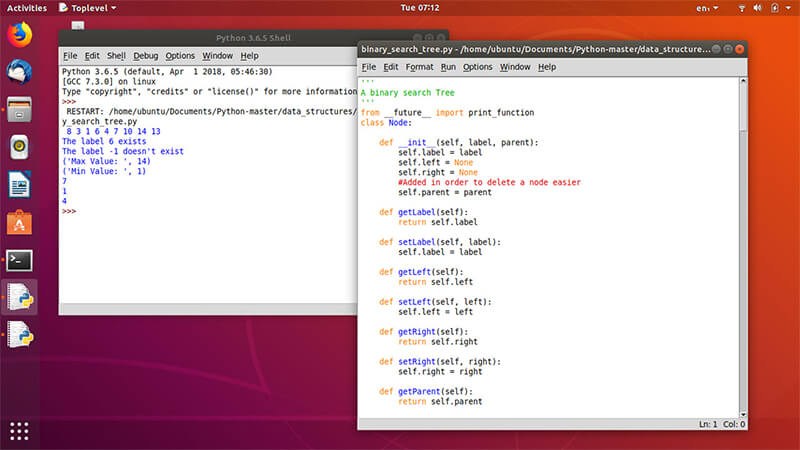
This is different from the python command which will load up Python 2.7. To run Python 3 from the Terminal, you’ll use the command python3. There are a couple ways that you can run Python 3 scripts on your Mac.ġ. Inside that folder you’ll find a GUI interface for launching Python applications, as well as IDLE, an IDE for developing Python applications. If you open the Applications folder, you’ll find a new Python 3.x folder.Ĥ. Double-click on the downloaded file to run the Python 3 installer.ģ.
GET TKINTER FOR PYTHON 3 MAC SIERRA DOWNLOAD
Download the most recent package from the Python website.Ģ. You can even run it alongside a concurrent Python 2.7 installation without affecting the version 2.7 installation.ġ. Upgrading to Python 3 on your MacĮven if it isn’t the de facto standard, you can run Python 3 on your computer today. Utilities like 2to3 make it easier to transform a Python 2 program into valid Python 3 syntax, but if you’ve ever used Google Translate, you know this won’t be perfect. The developers have set 2020 as the final year for Python 2 support, and everyone will need to transition their programs over to Python 3 by then. However, Python 2 isn’t going to be around forever. Plus, Python 2.7.10 is pre-installed on all Macs and a number of Linux distros. The idea is to grab a list of running process IDs before and after you load Tkinter.
GET TKINTER FOR PYTHON 3 MAC SIERRA FULL
Python 2 is a strong language, and only power users will get to experience the full benefit of Python 3’s new features. Regarding the Mac, I noticed there can be a problem in that if there are multiple python GUIs running, every process will be named Python and AppleScript will tend to promote the wrong one to the front. Even fundamental functions like print work differently between Python 2 and 3, making it non-trivial to move from one platform to another.īut why hasn’t the whole world switched over to Python 3? The main problem is that there’s a lack of compelling motivation. That means that programs written for a Python 2 interpreter won’t run on a Python 3 interpreter. However, alongside those new features, Python 3 also has a problem: it’s not backwards compatible with Python 2. They wouldn’t be totally wrong since Python 3 includes some cool new features that Python 2 does not have. 2to3 or not 2to3?Ī naive user might think that Python 3 is better because it’s newer. If this seems like a large gap between versions, that’s because it is. But the newer version isn’t necessarily better: Python 3 isn’t backwards compatible with Python 2, and most developers are still using Python 2. New Macs still ship with Python 2.7.10, even though the most recent stable release is Python 3.5.

For most user apps, you’d be right, but for underlying frameworks it’s a different story. You might think that your brand-new Mac has the newest version of all the relevant software. replace ( '\ ', ' ' )) Button ( root, text = 'Font Chooser', command = callback ). configure ( font = font_str, text = 'Chosen font: ' + font_str. replace ( ' ', '\ ' ) font_str = " %(family)s %(size)i %(weight)s %(slant)s " % font if font : font_str += ' underline' if font : font_str += ' overstrike' label. pack ( padx = 10, pady = ( 10, 4 )) def callback (): # open the font chooser and get the font selected by the user font = askfont ( root ) # font is "" if the user has cancelled if font : # spaces in the family name need to be escaped font = font. configure ( bg = bg ) label = Label ( root, text = 'Chosen font: ' ) label. theme_use ( 'vista' ) elif "darwin" in platform : style. Example try : from tkinter import Tk from tkinter.ttk import Style, Button, Label except ImportError : from Tkinter import Tk from ttk import Style, Button, Label from sys import platform from tkfontchooser import askfont # create main window root = Tk () style = Style ( root ) if "win" = platform : style.


 0 kommentar(er)
0 kommentar(er)
